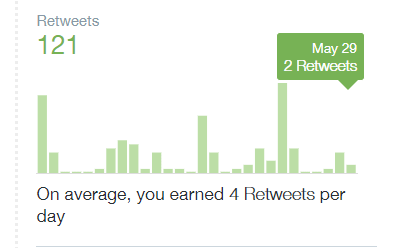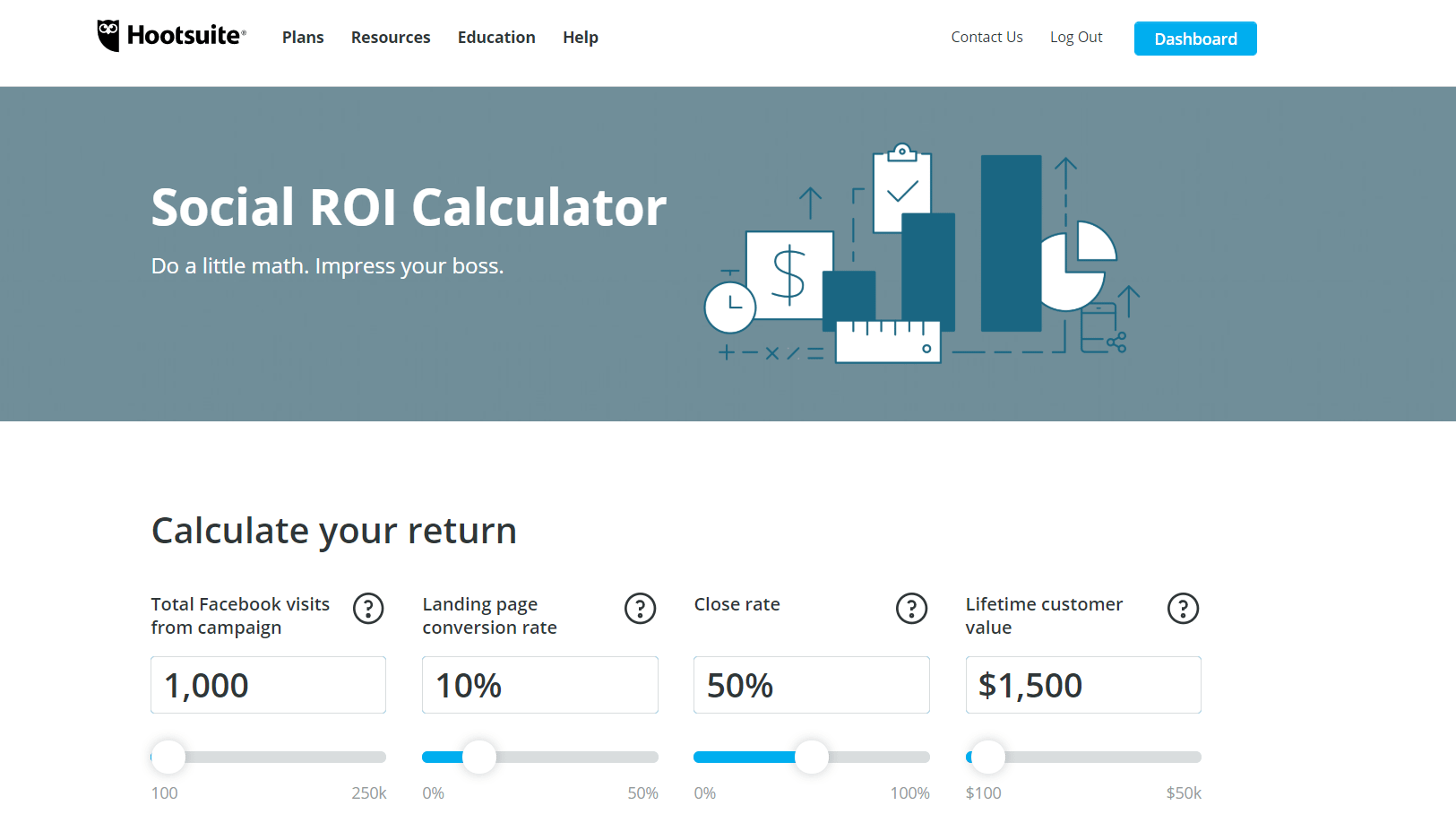Social media marketing is essential for any business looking to boost conversions, increase site traffic, and raise brand awareness. However, you need to be sure that your campaigns are worth the investment. To gain an idea of how successful they are, you’ll need to measure the Return On Investment (ROI) from social media.
In this post, we’ll explain what social media ROI is in more detail, and why it’s important. We’ll also discuss how you can calculate it accurately. Let’s get started!
What social media ROI is (and why it’s important)
We all know how important a social media presence is to your brand. You’ll likely spend hours carefully crafting it, and feature it prominently throughout your marketing. However, you should consider whether your business is actually benefitting from your efforts.
Enter your Return On Investment (ROI). This, in social media terms, is the gains you can expect to make from the time, money, and effort that has been spent on your social media marketing.
Observing your ROI will help you understand how well your social media marketing campaigns are doing. You may find an area that has consumed a lot of resources isn’t doing as well as you thought, meaning you can funnel those resources elsewhere. Your ROI can also help inform you on how to improve campaigns for maximum engagement.
If calculating your ROI is something you’ve struggled with in the past, you’re not alone. In fact, 55% of social marketers cited measuring ROI as their number one challenge – and only 17% said they can accurately quantify the revenue impact of their social media. This is because social media ROI isn’t solely defined by monetary gain. Several factors will contribute to your final figure, making it particularly difficult to establish.
How to calculate social media ROI (in 4 steps)
Fortunately, calculating your social media ROI isn’t impossible – though you’ll need to take numerous things into consideration if you want to achieve accurate data. Let’s begin by exploring the very core of your social media presence.
Step 1: Identify the purpose of your campaigns
ROI is often regarded as the monetary return you receive after an ad campaign. However, with social media, it’s a little different. As we touched upon, there are numerous social media metrics that can count towards your ROI.
In short, there’s no single way to use social media for an effective return. To clearly define your social media ROI, you instead need to identify why you want a presence in the first place. For example, do you want to build brand awareness, increase sales of a particular product, or drive traffic to your site? Regardless of the intention of your campaign, setting out a clear idea of what you want to achieve will help you understand what you’re looking for when calculating your ROI.
Step 2: Set achievable and actionable goals
Your purpose represents what social media will help your business achieve. Your goals will help you understand how you’ll achieve your purpose, and how it can be measured. For example, if your ultimate goal is to build brand awareness you’ll need to track the number of followers you gain, or the retweets you receive.


If the purpose of your social media ad campaign is to drive traffic to your site, you’ll measure how many ‘clicks’ a link on your ad receives. At this stage, it’s important to stay realistic. Social media marketing is powerful, but it’s usually not enough to bring millions of visitors to your small business website.
Aiming for unachievable numbers, whatever your area of focus, will leave you feeling disappointed – and will make your marketing efforts seem like a poor investment. Instead, set actionable and achievable goals. This will give you a more accurate idea of what your ROI is.
It will also mean you’re more likely to achieve them. For example, you could aim to gain 500 followers by the end of the year, or you could aim to reduce customer response time to an hour.
Step 3: Track the correct metrics
Once you’ve defined your goals, the next step is to track them. This is why it’s so important to set up goals based on actionable metrics. How you do this will depend on the specific software you use, however, most built-in trackers on social media sites will cover most situations.
Keep an eye on your Google Analytics to optimize your ads as you go #SocialMediaMarketing
Click To Tweet
It’s also vital to only track the metrics relevant to your previously defined goals. This will help you stay on track of what it is you want to achieve. Many consider stats such as follows and likes to be ‘vanity metrics’, however they do hold value. In fact, 80% of marketers use engagement as their primary success metric, whereas only 56% focus on site traffic.
This is especially important when the purpose of your campaign is to build brand awareness. Other metrics you may decide to establish ROI include reach, site traffic, sign-ups and conversions, and the generated revenue.
When deciding which of these metrics to use, you’ll also need to consider the following:
- Does this metric directly align with my objectives?
- Does it help me make decisions on what to do more of, and what to do less of?
- How can I measure it effectively?
Remember, don’t get caught up in the numbers that bear little relevance to your ultimate purpose. This can give you inaccurate ROI data, and is likely to negatively impact on your campaign further down the line.
Step 4: Assess your investments carefully
You’ll also need to be clear about your social media investments if you hope to distinguish whether you’re spending your resources wisely. Here are the four key things you’ll need to measure your return against:
- Time: How much time does your team spend on social media? This is one of the most valuable resources you have, so it’s important to measure it effectively. Add up the hours your social media team has put into a marketing campaign over a specific period of time. This includes the time spent attending meetings and running ads. Make sure you measure this investment per-campaign, rather than using an employee’s annual salary – they’re likely to be working on several projects at once.
- Content: The cost of content production is easy to overlook, as it can feel like business as usual. However, this is an essential consideration when calculating your ROI. Also, think about whether you outsourced any of the produced material, and how much it costs. Don’t forget that the content production will also count towards your time investment.
- Tools and Platforms: Most social media platforms are free to use, however it’s likely you’ll have implemented a social media management tool such as HootSuite or Sprout Social. You’ll need to factor these costs into your overall investment. Make sure you do so on a per-campaign basis, rather than including the cost of using the tool for the year.
- Social media ads: This is one of the most simple investments to track. Your chosen social media platforms will likely track the cost of your promoted content, meaning you can easily access the amount you’ve spent at any time. Advertising costs are likely where the bulk of your investments stem from. Studies have shown that marketers usually spend around 12% of their budget on social media ads.
Once you’ve added up the above outgoings, you can measure them against the goals and metrics you outlined earlier. You can measure whether your efforts have been a success by using (Profits – Costs) x 100 = ROI. For example, if your ultimate goal was to boost brand awareness, your formula would be The number of website visits via social media + Your Investment X 100 = Your overall ROI (displayed as a percentage).
The tools you’ll need to establish your ROI
Of course, to calculate your social media ROI, you’ll need to enlist the help of some handy tools. These will help you collect the data needed to establish your costs and the success of your advertising campaigns:
- Google Analytics, which is practically a given.
- A social media management tool such as Sprout Social or HootSuite. These will help keep your channels within one dashboard.
- The in-built data analysis on social media platforms.
By accessing the data found within these tools, it’s possible to work out your ROI manually. However, implementing an additional service will greatly simplify the process. The HootSuite social media ROI calculator is a great example. By entering the relevant data into the calculator, you can ensure that your final percentage is as accurate as possible.


Conclusion
Your ROI provides a direct insight into how well your social media marketing campaigns are doing. It will also establish whether the investment you’re putting in is worth it. You can then begin to adapt your future marketing efforts in order to bring in the best results.
- Identify the purpose of your campaigns
- Set achievable and actionable goals
- Track the correct metrics
- Assess your investments carefully
Do you have any further questions about social media ROI? Let us know in the comments section below!
The post How to calculate your social media ROI (in 4 steps) appeared first on Revive Social.